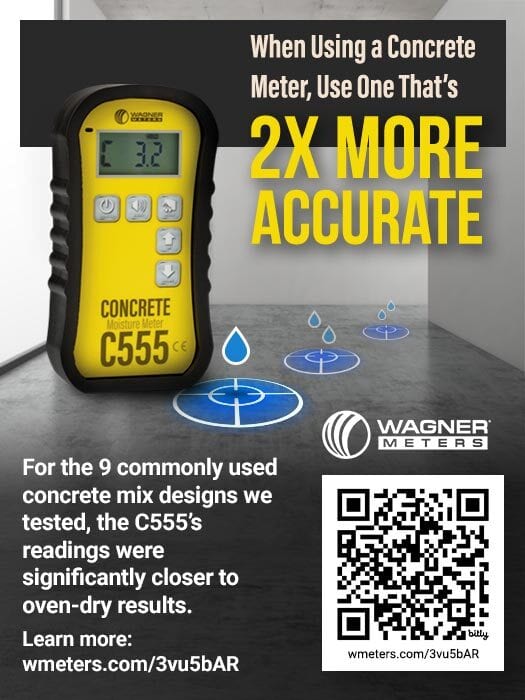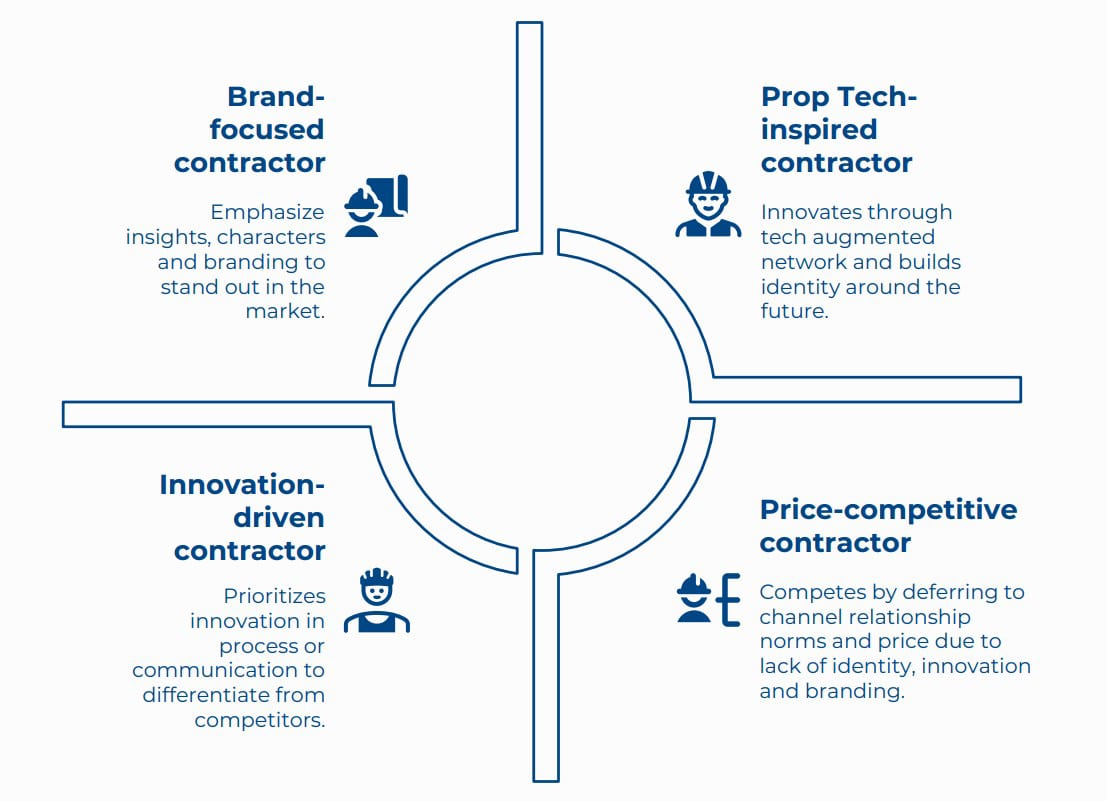By Tanja Kern
Commercial Flooring Trends
Four Design Trends Reshaping Commercial Flooring in 2025
Photo: Patcraft
As the design community gathered for Chicago Design Week, four transformative trends emerged that are reshaping commercial flooring. These shifts—sensory-based design, cross-sector adaptability, material innovation, and resilience—reflect how flooring has evolved beyond function to become a strategic tool for occupant wellness, operational flexibility, and environmental stewardship.
Sensory Intelligence: Designing for the Brain
Neuro-inclusive design is revolutionizing flooring selection as employers recognize culture and belonging as primary motivators for office return, with 58% citing this as their top priority according to JLL's Outlook on Design Trends 2025. "Everyone's brain works uniquely, and a space designed thoughtfully for diverse needs naturally benefits all employees," said Pallavi Dean of Dubai-based Roar design studio.
This philosophy is driving manufacturers to embrace biophilic design principles that activate positive neurological responses. Nature-inspired patterns and textures are emerging as powerful wellness tools, with wood-look luxury vinyl tile and carpet designs incorporating organic forms that help soothe the brain's amygdala, reduce stress, and lower heart rate. These biophilic elements create an intuitive, non-verbal design language that supports both neurotypical and neurodivergent users.
Acoustic performance has become equally critical. Sound-absorbing carpet tiles with enhanced backing systems and resilient flooring with integrated dampening properties minimize sensory overwhelm, addressing what HOK's Kay Sargent calls "sensory barriers" that "affect all of us, neurotypicals and neurodivergents alike." Visual processing support comes through subtle patterns and gentle transitions that reduce cognitive fatigue throughout the workday.
Mohawk Group's MultiSensory Collection exemplifies this revolution, addressing the growing human need for tactile engagement in our increasingly digital world. The collection delivers varying degrees of texture through plush, sophisticated carpets that combine natural wool aesthetics with high-performance Duracolor Tricor fiber. Meanwhile, their Fractal Findings collection harnesses research from Dr. Richard Taylor of Fractals Research, using fractal patterns that mirror nature's inherent geometry to reduce stress and enhance cognitive function through visual connections to the natural world.
Shaw Contract's Coexist carpet tiles transform flooring into a "catalyst for social impact," drawing inspiration from Japanese raku pottery traditions to create textural surfaces with abstract, organic textures that encourage conversation, creativity, and meaningful interaction. The collection demonstrates how flooring can serve as a "community thread that weaves individuals into a shared tapestry of experiences."

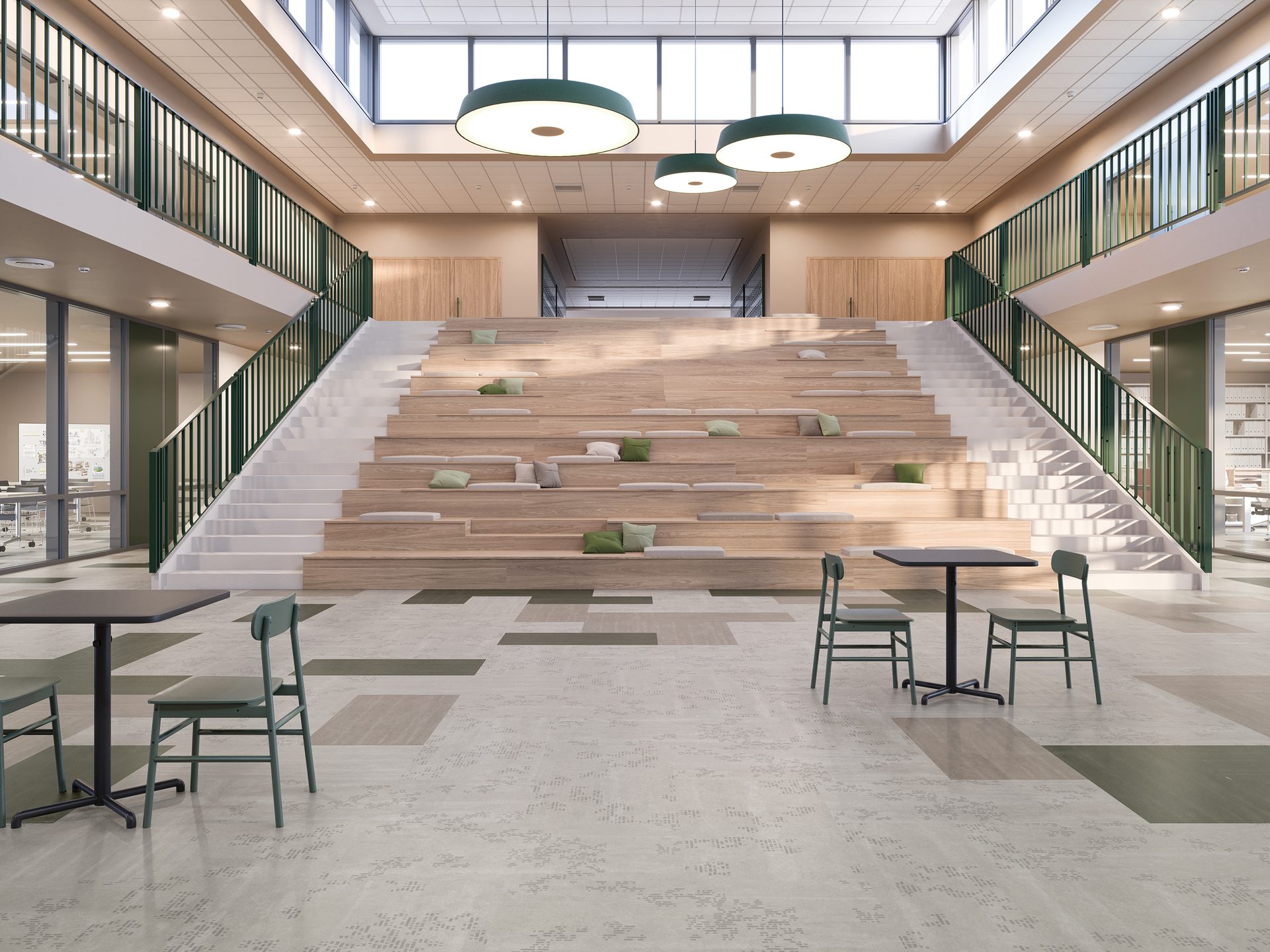
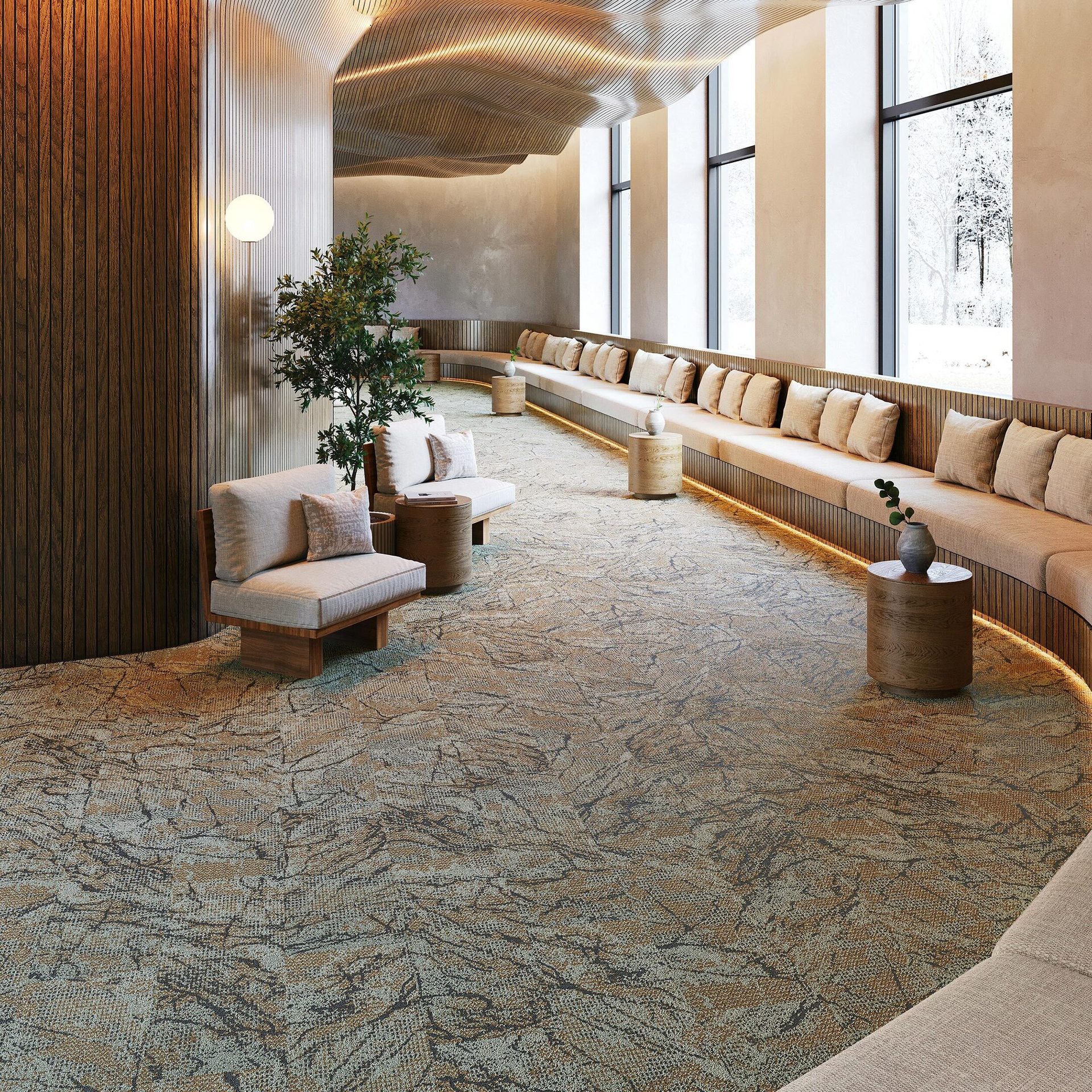
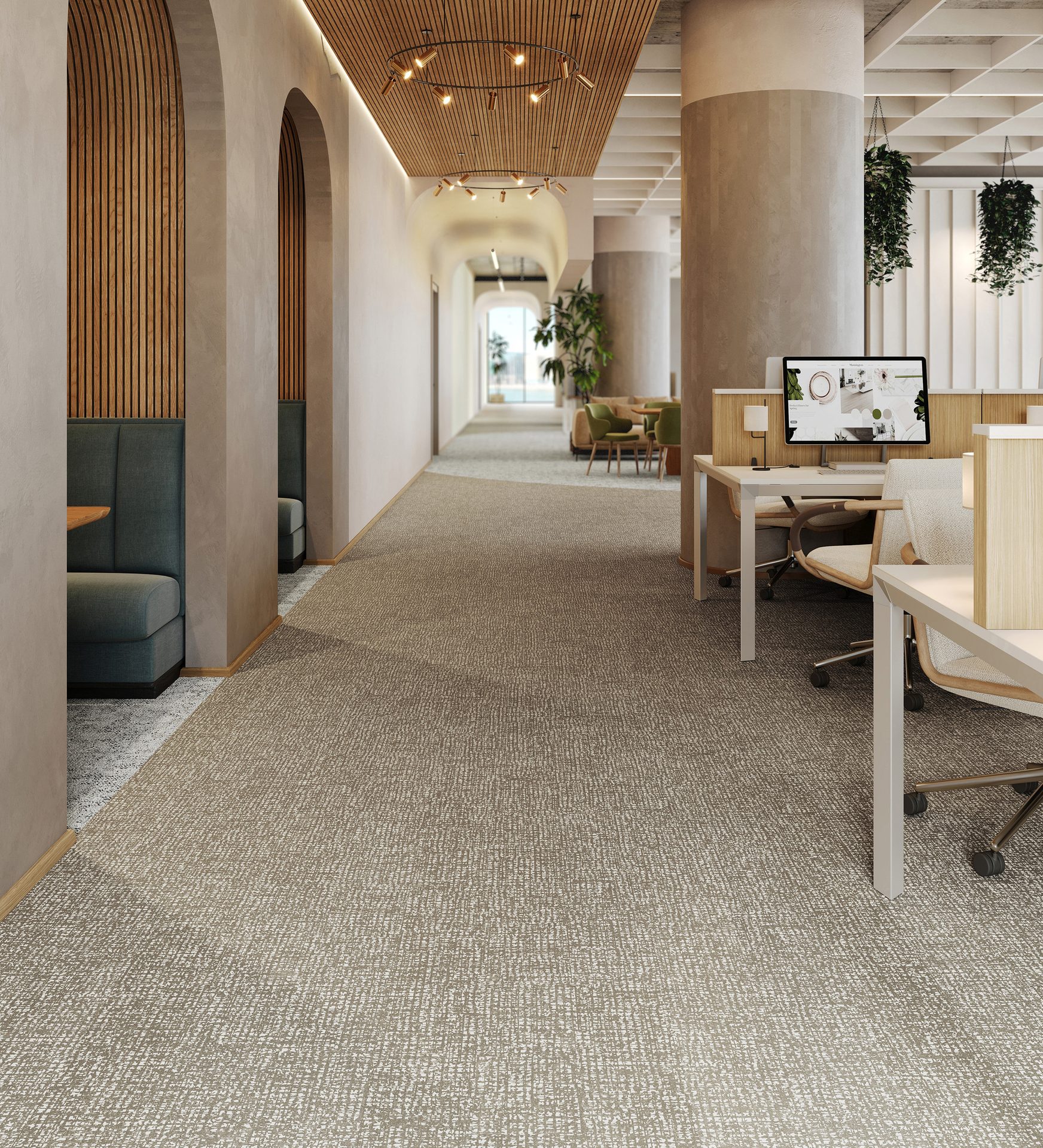
Fluid Boundaries: One Floor, Multiple Functions
Traditional boundaries between work, learning, hospitality, and retail environments continue to blur. Airport lounges double as remote workstations, hotel lobbies transform from quiet work zones to vibrant social hubs, and corporate offices incorporate hospitality-inspired gathering spaces. This evolution demands flooring solutions that support multiple modes of engagement without major renovation.
Modular systems have become essential for this new reality. Carpet tiles and LVT systems that can be easily reconfigured, replaced in sections, or adapted as space functions change provide the flexibility modern environments require. Performance consistency across different use patterns ensures today's commercial flooring maintains both appearance and functionality whether supporting quiet concentration, high-traffic collaboration, or hospitality-style social interaction.
Aesthetic continuity allows different performance levels—carpet for comfort zones, hard surfaces for active areas—while maintaining visual cohesion as spaces flow together. Coordinated flooring families enable seamless transitions that support the boundaryless approach to modern interior design.
Kaleido by AHF Products exemplifies this adaptability, offering a curated palette of 28 saturated accent colors across three dynamic, textile-inspired patterns. Designers can craft custom floors by combining different, complementary SKUs to align with specific branding needs, create intuitive wayfinding, or set the tone for immersive environments. "This is about making the floor part of the storytelling process—from brand identity to intuitive navigation through space," said Oxana Dallas, principal designer-commercial at AHF Products.
Patcraft’s Geometrix simplifies sheet installation – cutting time and reducing cost – to keep healthcare spaces up and running. Mapped, measured and digitize for a custom-cut plan to ensure a perfect fit room to room.
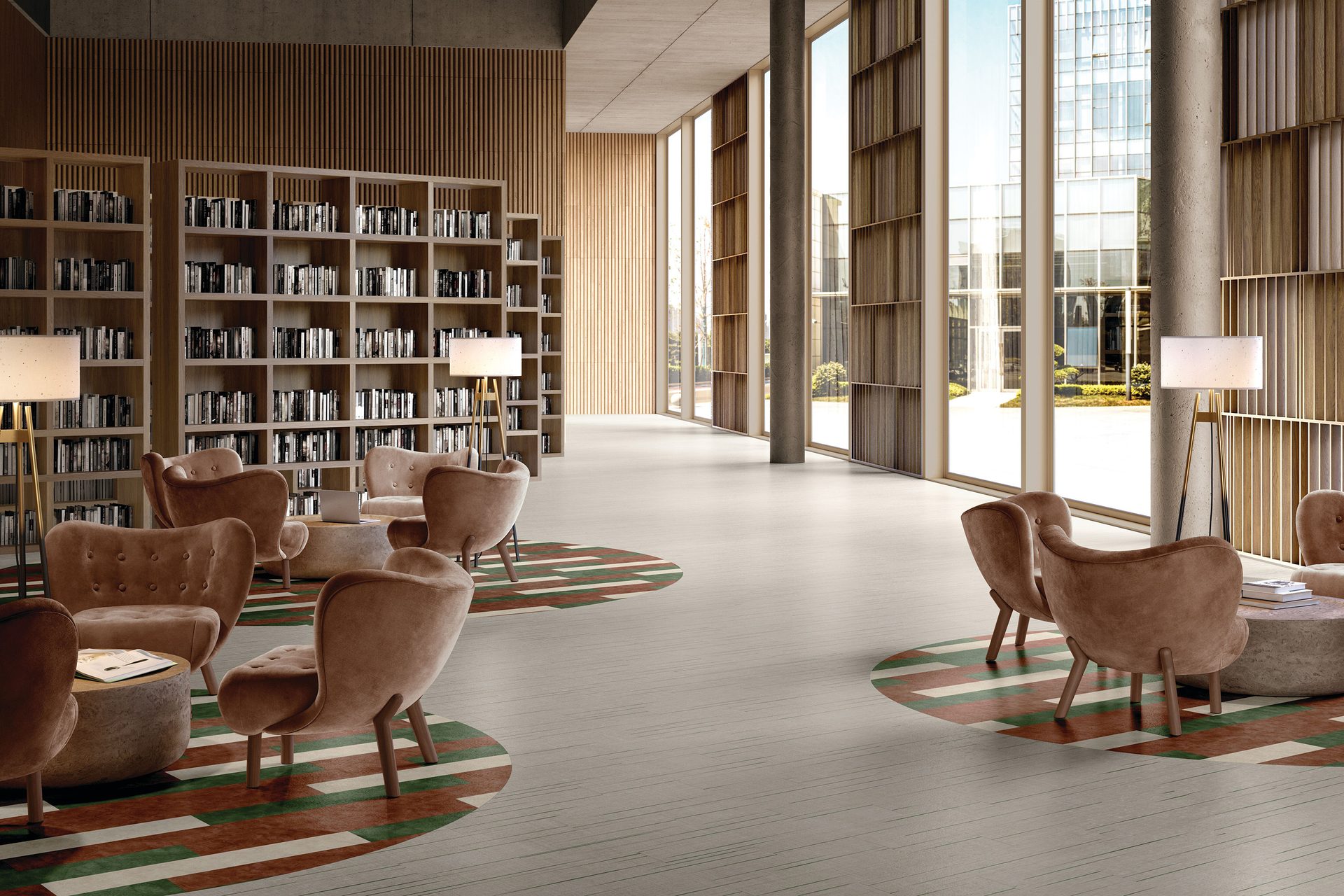
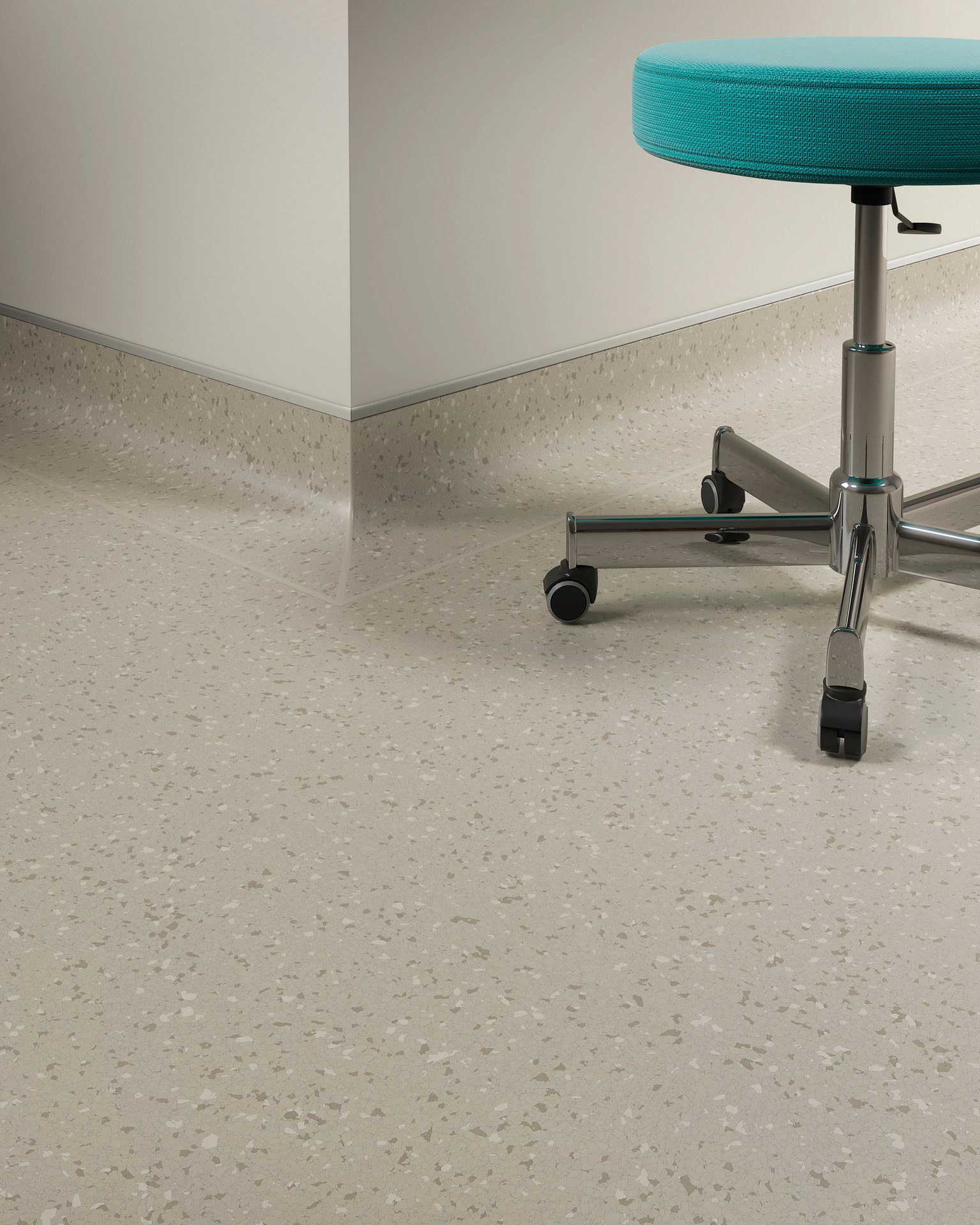
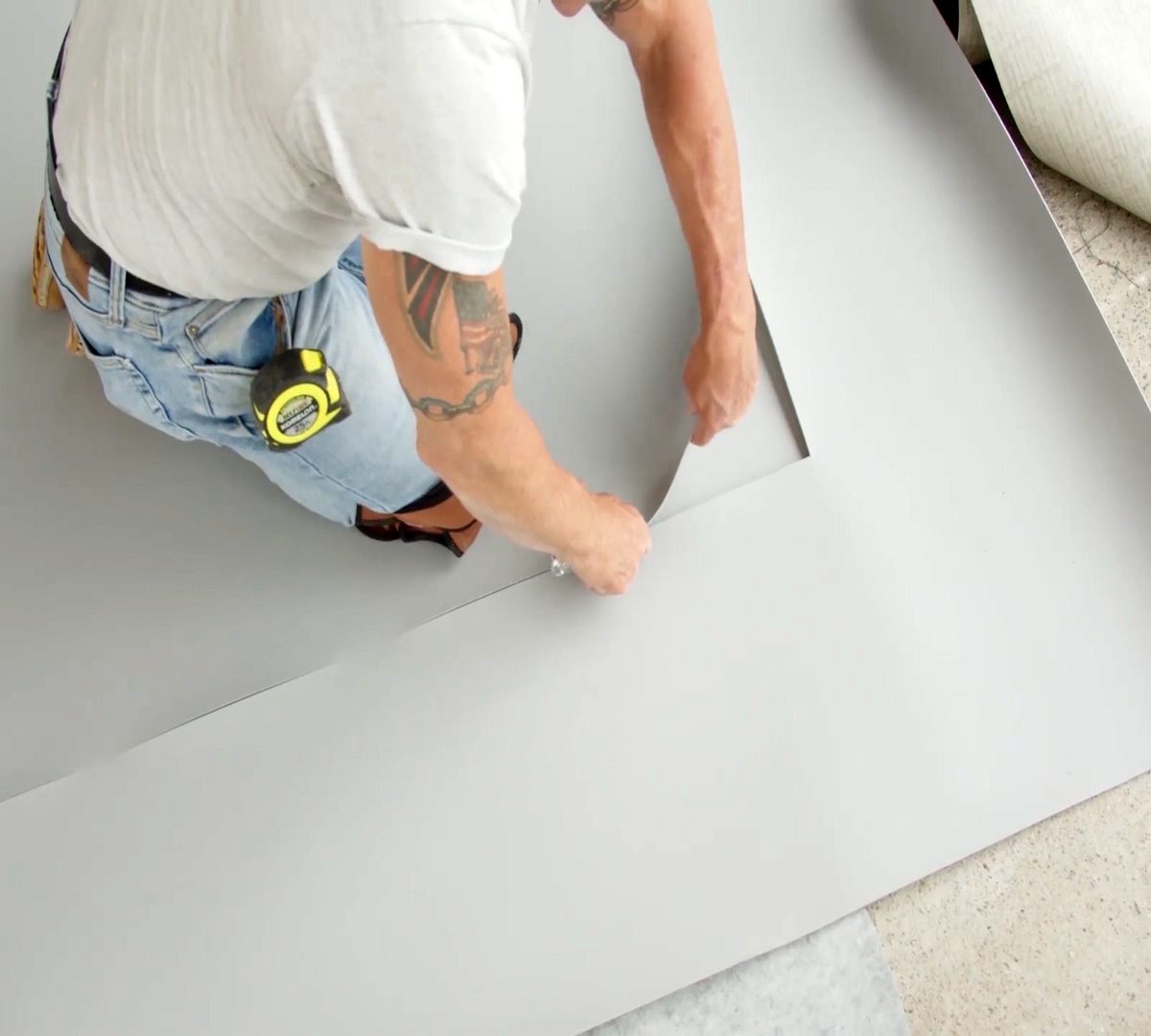
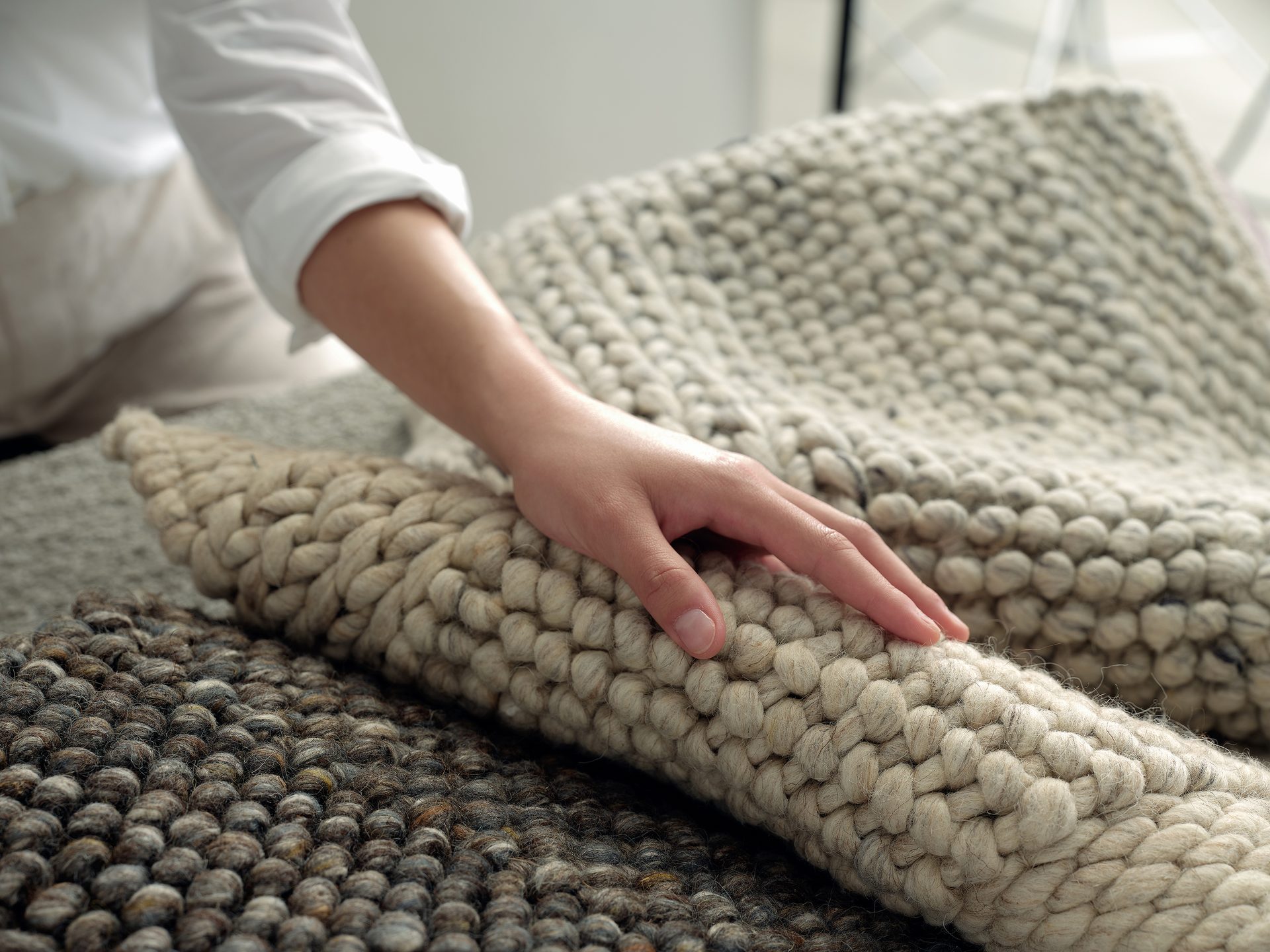

The Materials Revolution: Circular and Smart
Sustainability has evolved from an optional consideration to a primary driver of decision-making. Gensler's 2025 Design Forecast highlights the emergence of a "materials revolution" driven by urgent needs for climate risk mitigation and carbon reduction. The business case is compelling: PwC reports that sustainable products can deliver up to 25% revenue gains, while IBM found that 69% of executives believe sustainability should be a higher priority.
Circular design principles are transforming flooring manufacturing. Products like Aquafil's Econyl carpets transform ocean plastic and industrial waste into high-performance flooring solutions through true closed-loop systems that maintain quality and durability while diverting waste from landfills and oceans. Bio-based materials are expanding rapidly, incorporating renewable content, biodegradable components, and agricultural byproducts that reduce environmental impact without compromising performance.
Smart integration represents the next frontier in flooring innovation. Embedded sensors can track space utilization, integrated lighting can provide wayfinding assistance, and some systems can even generate energy through foot traffic. As Mark Bryan from Future Today Strategy Group notes, "We're entering a new era where materials are no longer passive elements."
Aquafil's Econyl Bespoke Collection exemplifies this materials revolution by transforming 100% pre- and post-consumer nylon waste into luxury yarn finishes that rival natural materials in both aesthetics and performance. The collection's three signature finishes—ReLana (wool-inspired), ReSeta (silk-inspired), and Terra (natural fiber alternative)—demonstrate how circular design can deliver premium quality without environmental compromise.
Tarkett's groundbreaking partnership with Mycocycle showcases true circular innovation, transforming decades-old Powerbond carpet into biobased raw materials through mushroom mycelia technology. This revolutionary process converts returned flooring from Tarkett's ReStart recycling program into materials for future Tarkett Sports products, proving that even legacy materials can achieve multiple lifecycles.
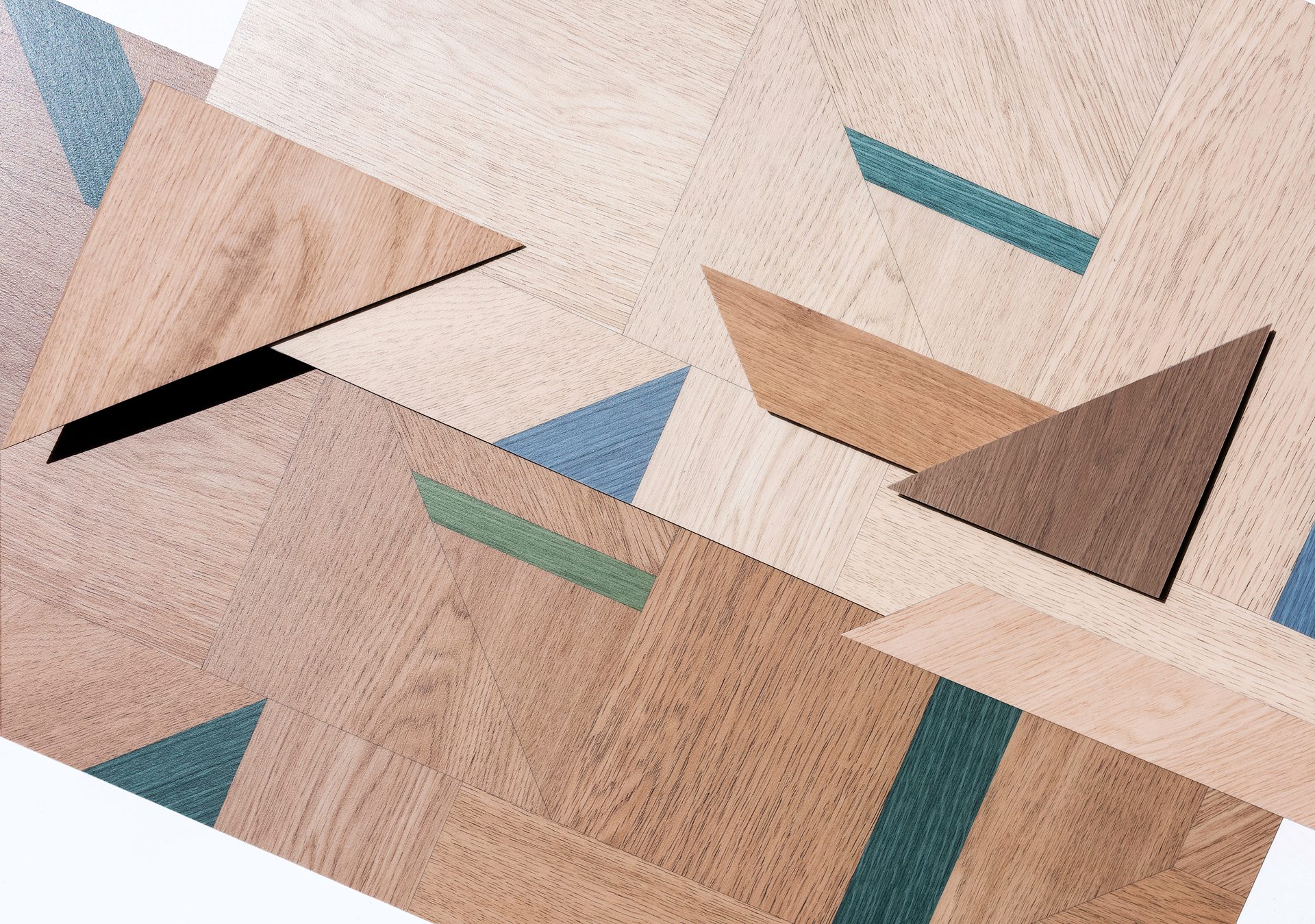
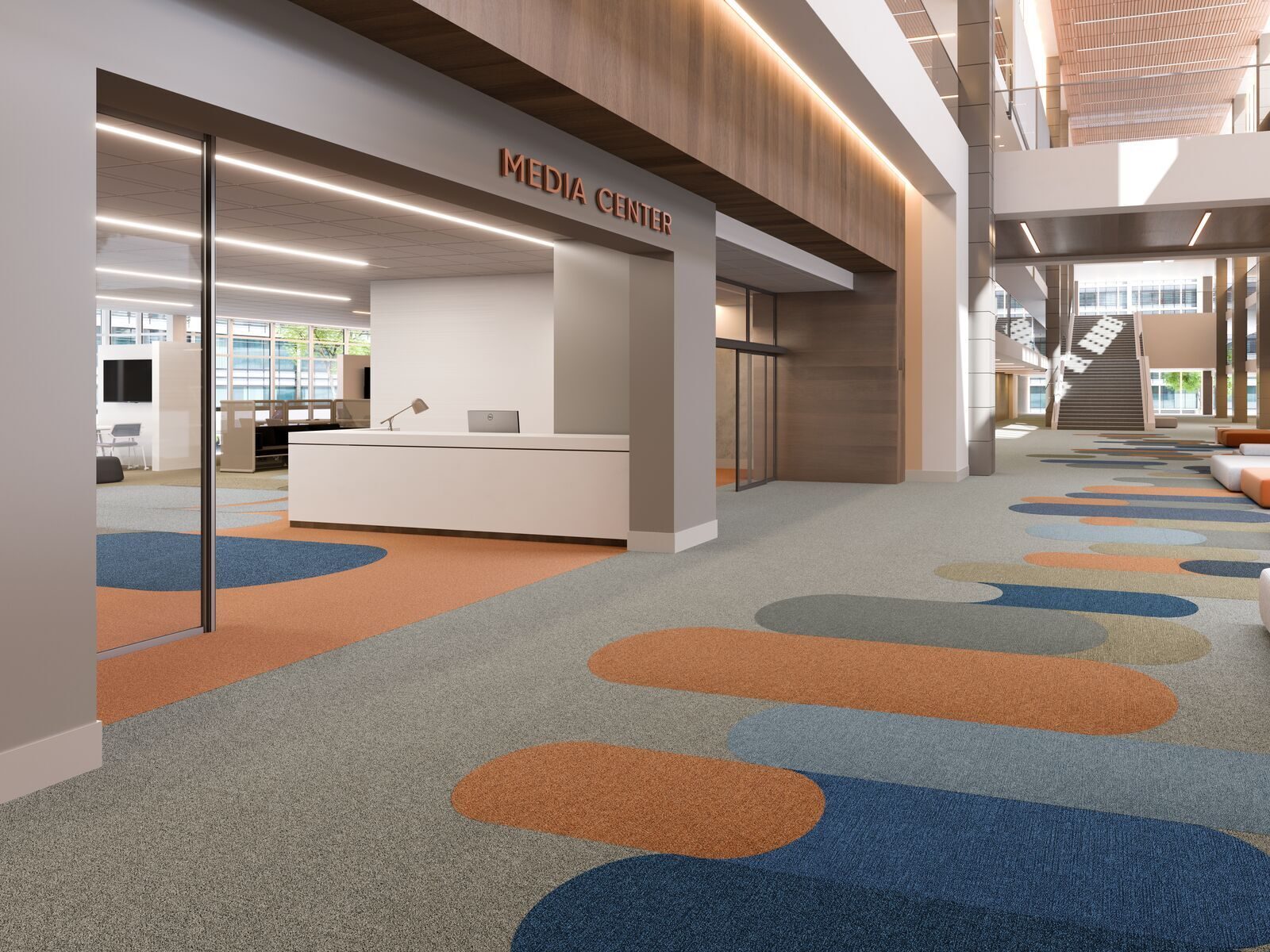
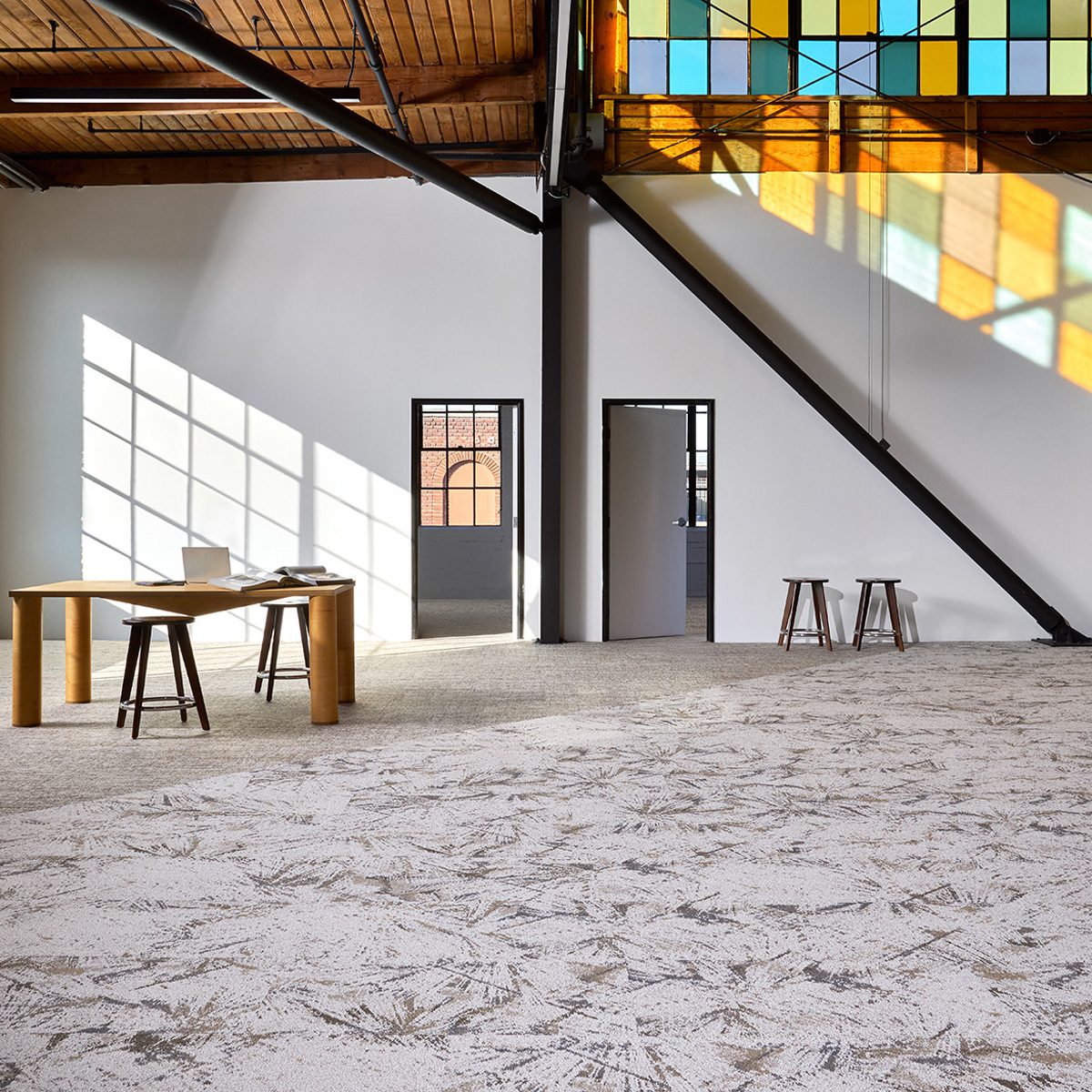

Resilience: Built for an Uncertain Future
Climate instability, public health concerns, and supply chain disruptions have elevated resilience to a critical design imperative. ThinkLab reports that 65% of architecture and design professionals now cite durability as their top product selection factor—a significant shift toward long-lasting, high-performance solutions.
Enhanced durability encompasses superior wear resistance, stain protection, and appearance retention despite heavy use and intensive cleaning protocols. This focus on longevity reduces lifecycle costs while minimizing environmental impact through reduced replacement frequency. Health-focused performance has become standard rather than optional, with antimicrobial treatments, low-emission materials, and surfaces that support enhanced cleaning and disinfection protocols without degradation addressing ongoing public health considerations.
Climate adaptability ensures flooring systems can handle temperature fluctuations, humidity changes, and extreme weather events while maintaining structural integrity and appearance. Simplified maintenance reduces both operational costs and environmental impact through easier cleaning procedures, spot-replacement capabilities, and resistance to common damage modes.
Armstrong Flooring's TimberTones Densified Hardwood exemplifies this resilience imperative, utilizing a revolutionary heat-and-pressure process that transforms natural wood into a high-performance surface built for demanding environments. This patented technology densifies only the veneer layer by closing the wood's open cells without chemicals or fillers, creating floors that are six times more dent-resistant and four times more scratch-resistant than traditional hardwood.
Tarkett's updated Acczent Woods & Stones collection embodies the durability imperative, combining aesthetic appeal with uncompromising performance for demanding healthcare environments. The collection's 32-mil wear layer and innovative Techtonic XD protection deliver superior resistance to stains, scratches, and scuffs, while eliminating the need for floor finish. This addresses the industry's focus on long-term performance with minimal maintenance.
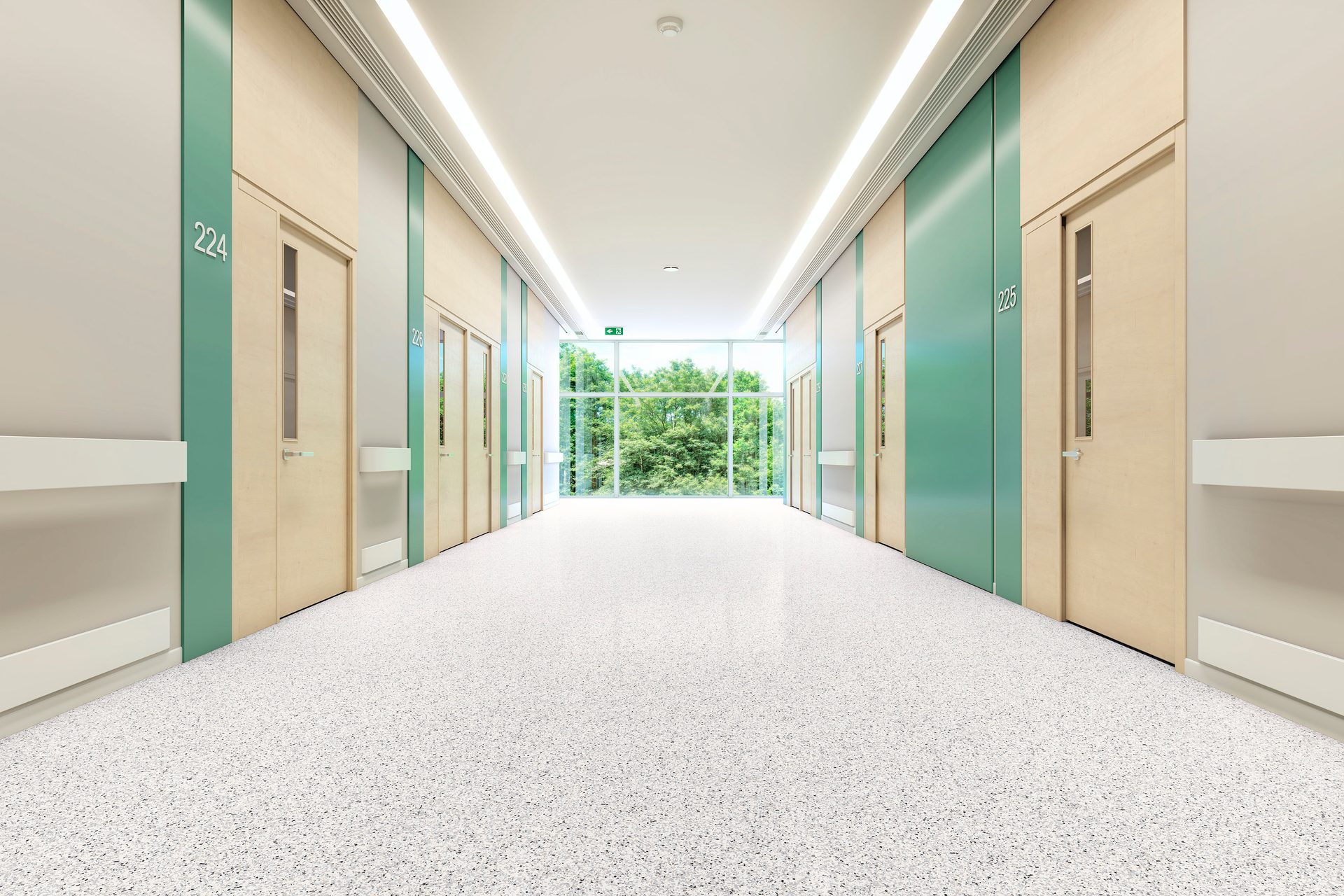
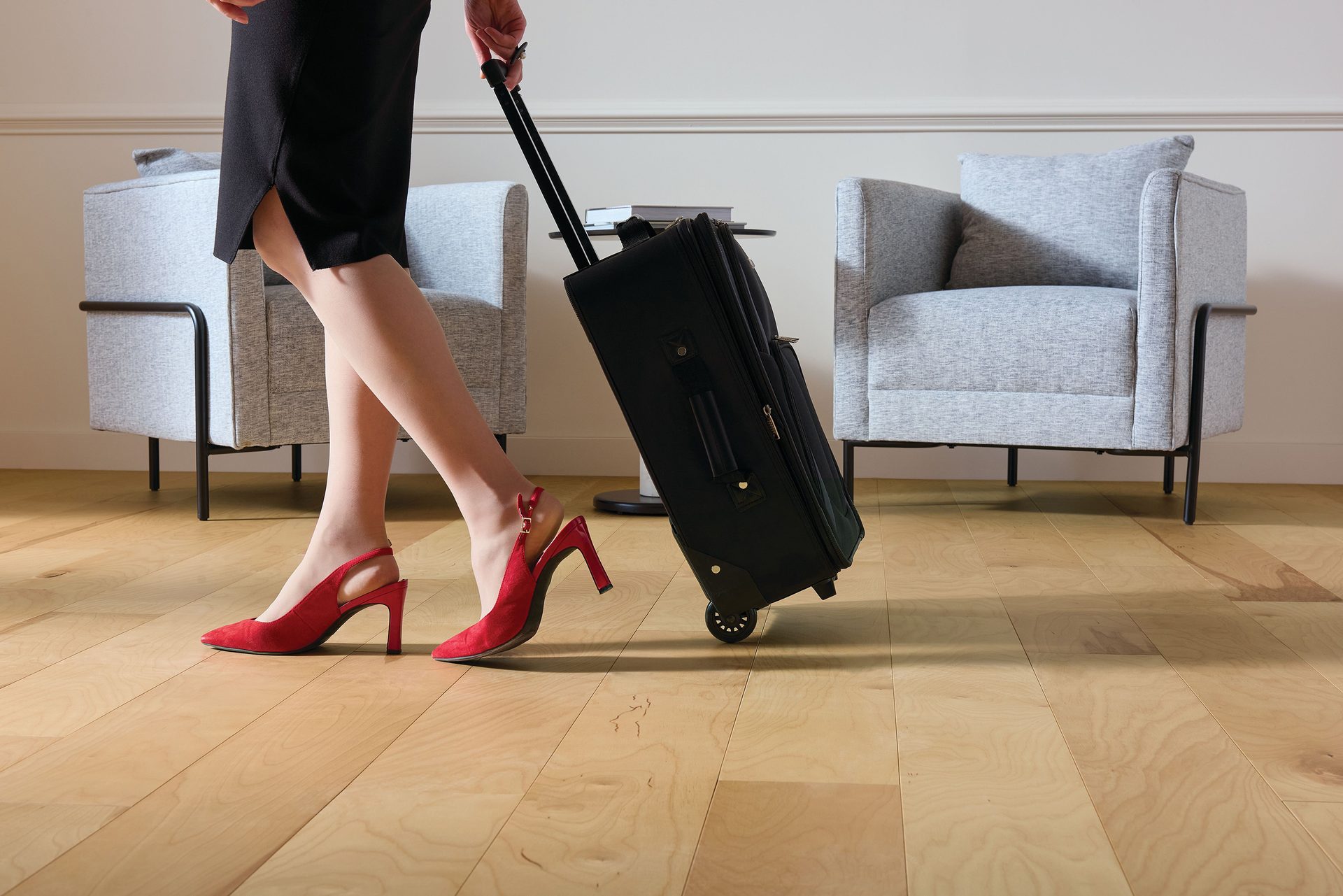
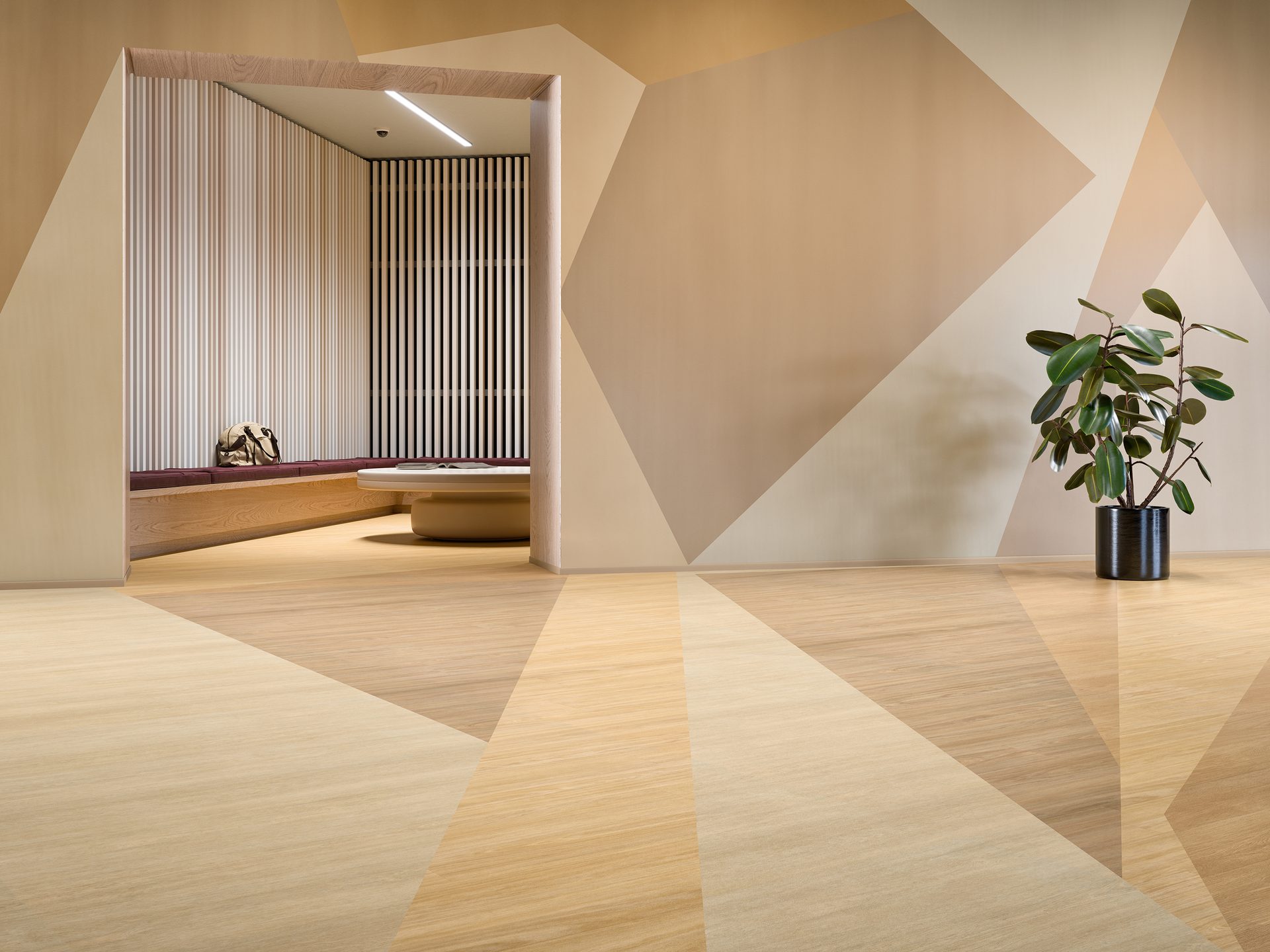
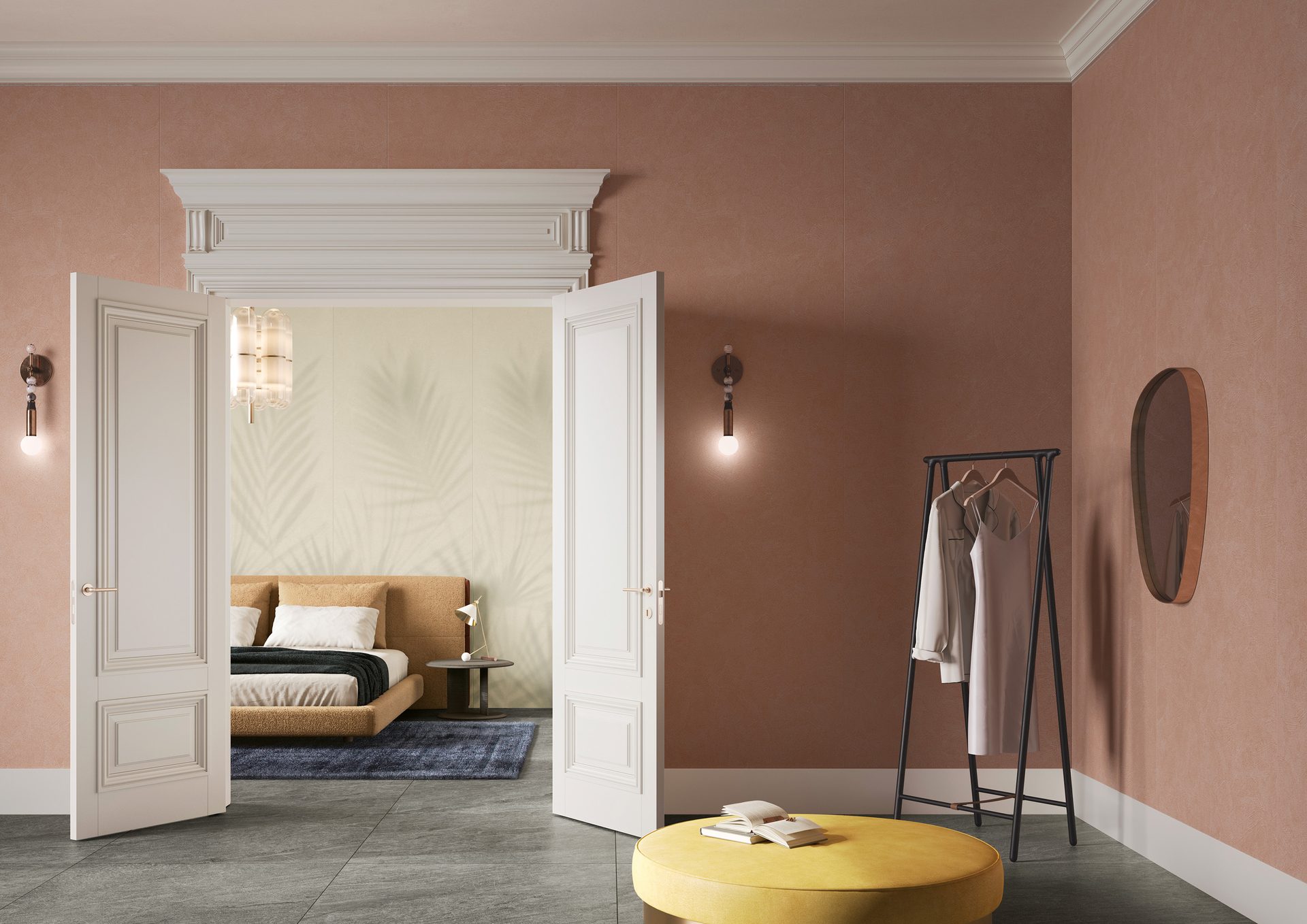
The Convergence Effect
The convergence of these four trends—sensory intelligence, boundaryless adaptability, material innovation, and resilience—signals a fundamental transformation in commercial flooring. No longer simply a functional building component, today's flooring actively contributes to occupant wellness, operational efficiency, environmental responsibility, and long-term building performance.
The most successful flooring solutions integrate multiple benefits simultaneously. They support human experience through sensory-conscious design, enable operational flexibility through modular systems, minimize environmental impact through circular materials, and ensure lasting performance through enhanced durability. As we look ahead, commercial flooring will continue evolving toward greater integration with building systems, enhanced responsiveness to occupant needs, and deeper alignment with sustainability goals.
The foundation of tomorrow's built environment is being laid today—one square foot at a time.

